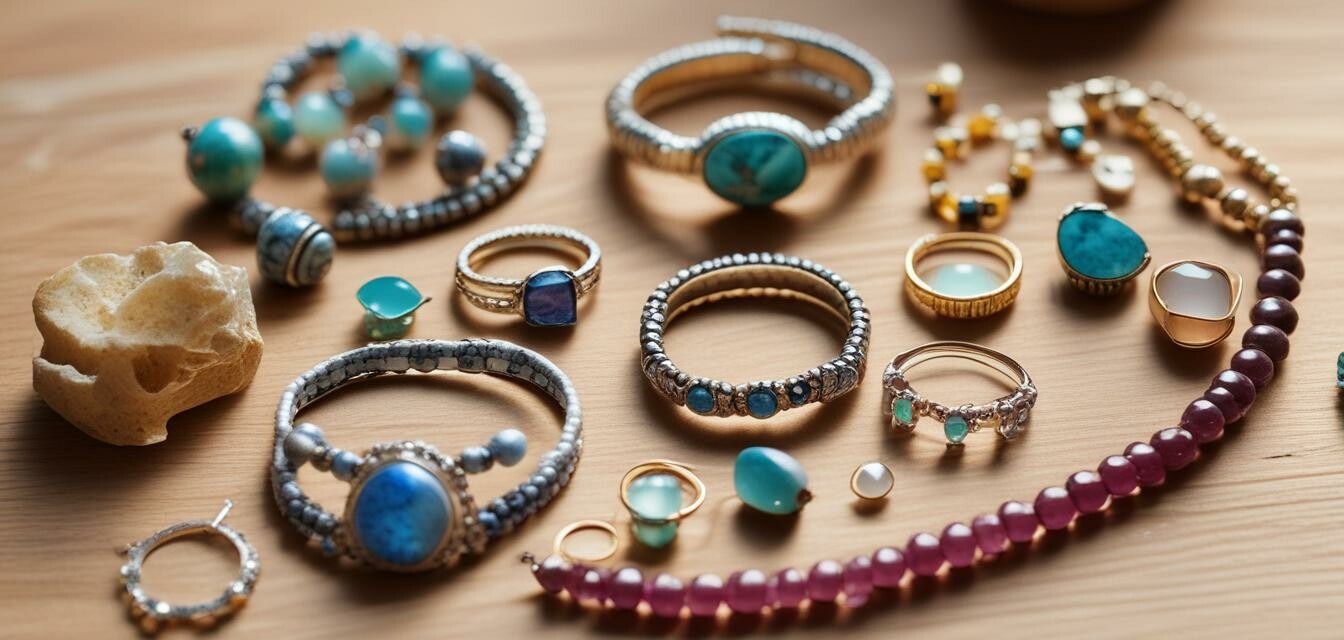
Crafting a Sustainable Jewelry Wardrobe
- Focus on ethical sourcing and sustainable practices.
- Choose versatile pieces that enhance your personal style.
- Look for certifications that guarantee sustainability.
- Support artisans and brands dedicated to eco-friendly processes.
- Incorporate a mix of styles for versatility in your jewelry wardrobe.
Building a sustainable jewelry wardrobe is an excellent way to express your personal style while making choices that are good for the planet. With increasing awareness of the impact of jewelry production on the environment and communities, many are seeking pieces that are not only beautiful but also ethically sourced. In this article, we'll provide tips on how to curate a jewelry collection that aligns with sustainable practices.
Understanding sustainable jewelry
Sustainable jewelry refers to pieces that are crafted with consideration for both environmental and social impacts. This includes the sourcing of materials, the methods of production, and the working conditions of artisans. It's essential to understand what makes jewelry sustainable to make informed purchases.
Key elements of sustainable jewelry:
- Ethical sourcing: Materials should be obtained from suppliers who prioritize environmental protection and fair labor practices.
- Eco-friendly materials: Using recycled materials or sustainably mined gemstones reduces the environmental impact.
- Transparent supply chain: Brands should be open about their sourcing and production processes.
- Supporting artisans: Look for jewelry that is handmade by artisans, which often promotes fair wages and local economies.
Building your collection
Now that you understand the core elements of sustainable jewelry, it's time to start building your collection. Here are some tips that can help guide you:
1. Define your personal style
Before purchasing new pieces, take some time to define your personal style. Consider the following:
- What colors do you naturally gravitate towards?
- Do you prefer minimalist designs, or do you lean toward bohemian styles?
- How often do you wear jewelry, and what occasions will you be accessorizing for?
2. Invest in versatile pieces
When selecting jewelry, choose items that can be styled in multiple ways. Here is a table of some versatile jewelry types to consider:
| Jewelry Type | Versatility |
|---|---|
| Hoop earrings | Can be dressed up or down, matching various outfits. |
| Layerable necklaces | Mix and match lengths for different looks. |
| Stackable rings | Combine different styles and metals for personalized expression. |
| Bracelet sets | Wear individually or stacked together. |
3. Research brands and artisans
Choosing the right brands that align with your sustainable values is crucial. Look for certifications like:
- Fair Trade
- Responsible Jewelry Council (RJC)
- EcoCert
- Artisan Alliance
It's also a great idea to connect with local artisans and small businesses. Supporting local talent can make a significant impact on your community and the environment.
4. Care for your jewelry
Maintaining your jewelry pieces ensures longevity and reduces waste. Here are some care tips:
- Store pieces in a dry, cool place to prevent damage.
- Clean jewelry regularly with a soft cloth.
- Avoid exposing pieces to harsh chemicals, especially for gold and silver items.
5. Mindful purchasing
Before making a purchase, ask yourself:
- Do I really need this piece?
- How does this brand align with my values?
- Is this jewelry going to contribute positively to my style and wardrobe?
It's essential to make intentional purchases that reflect your commitment to sustainability.
Making a difference
By choosing sustainable jewelry, you're not just enhancing your style; you're also contributing to a more ethical industry. Supporting brands and artisans focused on sustainability fosters a positive shift in how jewelry is produced and marketed. You can explore more about ethical practices in our dedicated section on Sustainability Practices.
Pros
- Supports eco-friendly practices in the jewelry industry.
- Encourages ethical sourcing of materials.
- Promotes local artisans and communities.
- Enhances personal style with unique pieces.
- Reduces environmental impact through mindful consumption.
Cons
- Can be more expensive than conventional jewelry.
- Limited availability in some regions.
- Requires more research to ensure authenticity.
- May have a longer lead time for artisan-made pieces.
Conclusion
Crafting a sustainable jewelry wardrobe goes beyond personal aesthetics; it's about making choices that resonate with your values and contribute to a healthier planet. By focusing on ethical sourcing, supporting artisans, and selecting versatile pieces, you can build a collection that is both beautiful and meaningful. Join us in embracing a jewelry wardrobe that aligns with sustainability and fashion.